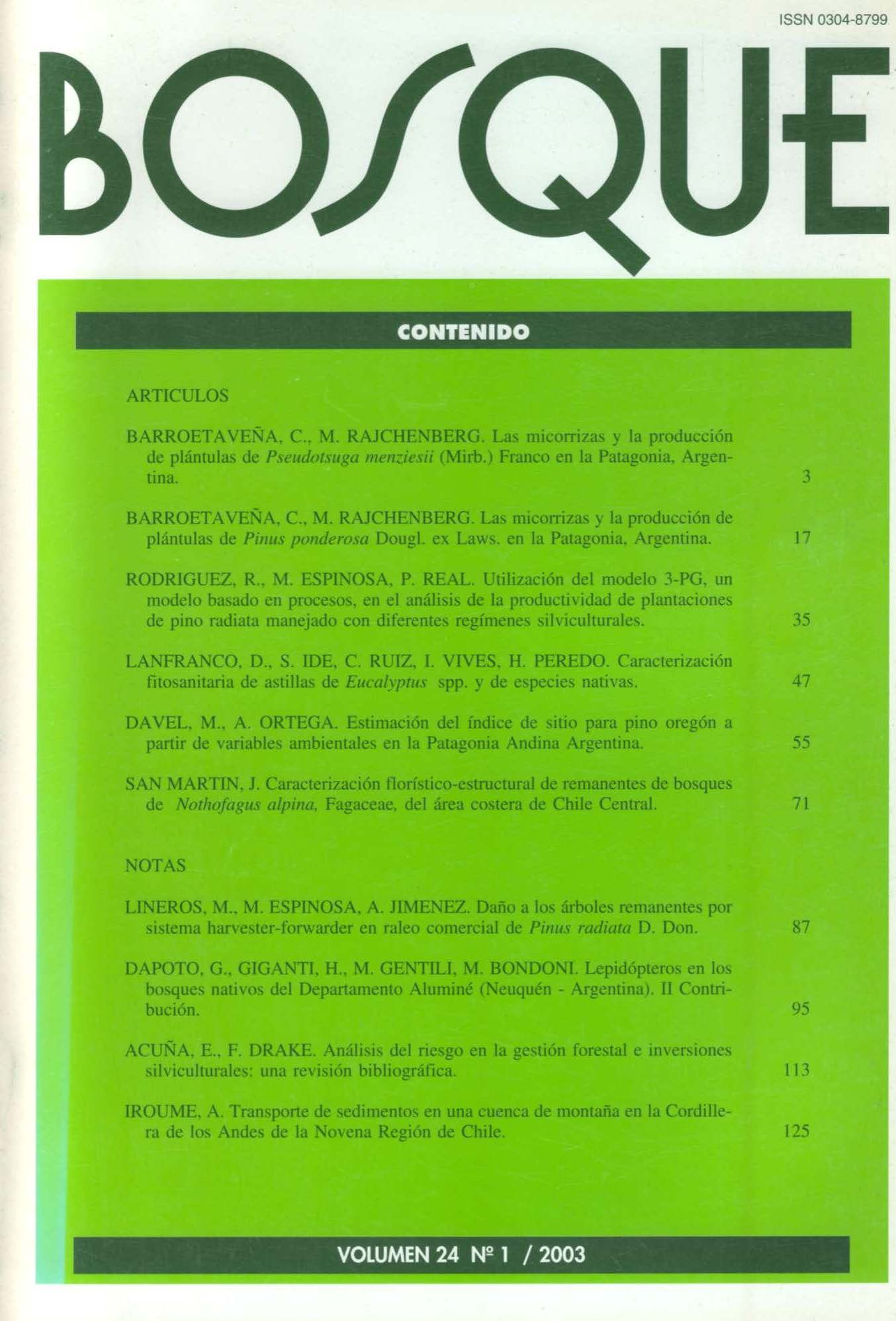Mycorrhizas and Pinus ponderosa Douglas ex Laws. management seedlings production in Patagonia, Argentina
Main Article Content
Abstract
A survey was conducted to study the mycorrhizal status and its relationship to six morphometric parameters in bareroot 2+0, 1+1, and 2+1 ponderosa pine seedlings of 14 crops from eight nurseries in the Río Negro and Chubut provinces (Argentina). The species of mycorrhizal fungi fruiting in each of these were identified. The percentages of mycorrhizal colonization were moderate (26–50%), with one exception, which was high (54%). Morphotype diversity was slightly higher in 2+0 seedlings. Recently established nurseries and those never inoculated with mycorrhizal fungi, far from pine plantations, had the lowest morphotype diversity and mycorrhizal colonization values. A total of 15 mycorrhizal morphotypes were identified in the root systems. The range of mycorrhizal morphotype diversity per crop varied between 7 and 17, but most crops supported 9–11 morphotypes. Positive correlations were found between mycorrhization percentage and the dry weight of the root system in most cases, and with root fibrosity, collar diameter, and mycorrhizal morphotype diversity per plant in fewer cases. Morphotype diversity per plant correlated significantly with morphometric parameters in very few cases. Overall, 11 species of mycorrhizal fungi were found fruiting in nursery beds, with Hebeloma mesophaeum(Pers.: Fr.) Quél. and Rhizopogon roseolus (Corda) Th. Fr. being the most widely distributed species.

